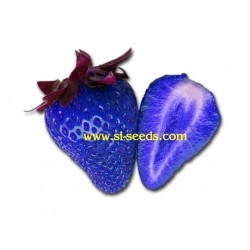Menu
-
MenuIndietro
- Home
-
Categorie
-
-
Categorie
-
Semi di Ortaggi
-
Varietà per Paese
- Varietà dall'Armenia
- Varietà dalla BiH
- Varietà dalla Croazia
- Varietà dalla Francia
- Varietà dalla Germania
- Varietà dalla Grecia
- Varietà dall'Ungheria
- Varietà dall'India
- Varietà dall'Italia
- Varietà dal Giappone
- Varietà della Macedonia del Nord
- Varietà dal Perù
- Varietà dalla Russia
- Varietà dalla Serbia
- Varietà dalla Slovenia
- Varietà dalla Spagna
- Varietà dalla Thailandia
- Varietà dalla Turchia
- Varietà dagli Stati Uniti
- Semi di pomodoro
- Semi di mais
- Famiglia di zucca
- Famiglia di fagioli
- Semi di cetriolo
- Semi di Peperone
- Famiglia di carote
- Famiglia di cipolle
- Semi di lattuga
- Famiglia di patate
- Famiglia di cavoli
- Semi di ravanello
- Famiglia di barbabietole
- Semi di Anguria
- Semi di Melone
- Semi Di Cavolfiore
- Famiglia girasole
-
Varietà per Paese
- Semi di Frutta
- Semi di Peperoncini
- Semi erbe aromatiche
- Piante rampicanti
- Semi Alberi Bonsai
- Semi di Palma
- Graminacee Ornamentali
- Semi di Tabacco
-
Semi di Ortaggi
-
-
-
-
- NUOVI PRODOTTI
- Consegna - Pagamento
- Creare conto
- FAQ
- Home
-
- Semi In Grandi Quantità
- Semi di Piante Giganti
- Semi di Ortaggi
- Varietà per Paese
- Varietà dall'Armenia
- Varietà dalla BiH
- Varietà dalla Croazia
- Varietà dalla Francia
- Varietà dalla Germania
- Varietà dalla Grecia
- Varietà dall'Ungheria
- Varietà dall'India
- Varietà dall'Italia
- Varietà dal Giappone
- Varietà della Macedonia del Nord
- Varietà dal Perù
- Varietà dalla Russia
- Varietà dalla Serbia
- Varietà dalla Slovenia
- Varietà dalla Spagna
- Varietà dalla Thailandia
- Varietà dalla Turchia
- Varietà dagli Stati Uniti
- Semi di pomodoro
- Semi di mais
- Famiglia di zucca
- Famiglia di fagioli
- Semi di cetriolo
- Semi di Peperone
- Famiglia di carote
- Famiglia di cipolle
- Semi di lattuga
- Famiglia di patate
- Famiglia di cavoli
- Semi di ravanello
- Famiglia di barbabietole
- Semi di Anguria
- Semi di Melone
- Semi Di Cavolfiore
- Famiglia girasole
- Varietà per Paese
- Semi di Frutta
- Semi di Peperoncini
- Semi erbe aromatiche
- Piante rampicanti
- Semi Alberi Bonsai
- Semi di banana
- Semi di Palma
- Graminacee Ornamentali
- Semi di Tabacco
- Semi di Fiori
- Semi di Cactus
- Semi di Pianta acquatica
- Istruzioni di semina
- Stampo per frutta e verdura
- Fungo Mycelium
- Bulbi delle piante
- Semi di bambù
- Piante ayurvediche
- Semi ibridi F1
- Imballaggio e roba
- Piante resistenti al freddo
- Cura delle piante
- Spezie Biologiche
- Consegna - Pagamento
- Nessun pagamento PayPal e carta X
Ultima Recensioni di prodotti
Out of the two seeds, one germinated and the other one was dead and floatin...
Da
 Riikka H su 07/03/2024
Riikka H su 07/03/2024
Acquisto verificato
Più venduti
Ci sono 1312 prodotti.
Visualizzati 1291-1305 su 1312 articoli
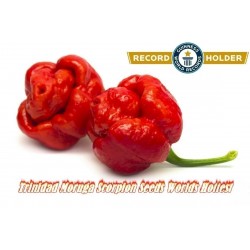
Semi di Peperoncino...
Prezzo
1,95 €
(SKU: C 1 R)
Seeds Gallery EU,
5/
5
<h2><strong><strong>Semi di Peperoncino Piccante Trinidad Scorpion Moruga</strong></strong></h2>
<h2><span style="color:#ff0000;"><strong><strong>Prezzo per Pacchetto di 5, 10, 25 semi.</strong> </strong></span></h2>
<p><strong>Come puoi vedere dalle nostre foto, che i semi provengono dalle nostre stesse piante (organicamente è cresciuto) e sai cosa otterrai dai semi che acquisti da noi ...</strong></p>
<p>Lo Scorpione di Trinidad ("Trinidad Scorpion Butch Taylor") è un peperoncino, originario del distretto di Moruga in Australia, classificato da febbraio 2012 come il più piccante al mondo. <span style="font-size:14px;">Lo ha identificato il Chili Pepper Institute dell’Università del New Mexico. Deriva dal Capsicum chinense, un peperoncino nativo dell’America Centrale e dei Caraibi.</span></p>
<p>Il nome Butch taylor gli è stato dato dalla persona che l’ha creato ed alla sua forma con la punta che assomiglia al pungiglione di uno scorpione.</p>
<p>Questo particolare peperoncino ha una concentrazione di capsaicina elevatissima, e raggiunge un grado piccantezza mai registrato prima: 2,009,231 unità o SHU (Scoville Heat Units) (il secondo Viper Naga registra “soli” 1.382.118 SHU )</p>
<div>
<div><em><strong> Video:</strong></em> <span><a href="http://www.youtube.com/watch?v=P2iWb6a8QD4" target="_blank" rel="noreferrer noopener"><span>http://www.youtube.com/watch?v=P2iWb6a8QD4</span></a></span></div>
</div>
<div> </div>
C 1 R

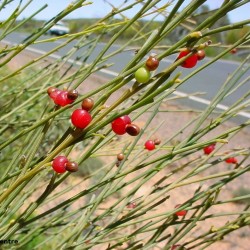
Semi di Ciliegia che piange...
Prezzo
1,35 €
(SKU: V 61)
Seeds Gallery EU,
5/
5
<meta http-equiv="Content-Type" content="text/html; charset=UTF-8" />
<h2><strong>Semi di Ciliegia che piange (Exocarpus sparteus)</strong></h2>
<h2><span style="color: #ff0000;"><strong>Confezione di 2 semi.</strong></span></h2>
<div>Exocarpos sparteus is an Australian endemic plant species, commonly known as the Broom Ballart or native cherry. The species is found in all states of mainland Australia.</div>
<div>A shrub, four metres tall, erect, with drooping branchlets, almost leafless. The species bears flowering branchlets, which may have small, greenish-yellow, and stalkless leaves. The flowers are just 1 mm across and of a similar colour, occasionally white. The fruit of this species is egg-shaped, pink or red, and between 4 and 5 mm long.</div>
<div>The habit of this plant is upright, becoming slightly curved, combining with the many regular branches to form a rounded aspect. The smooth and spherical appearance of the species is given by the droop of the branchlets, the similar colour and size of the leaves and flowers, and upcurving of the outward branches.</div>
<div>The specific name is derived from the Latin word esparto, referring to a kind of Spanish grass that was used for its fibre. It was first described by Robert Brown, in 1810, having collected the plants on his visit to King George Sound in 1802. One of the species' common names, Native Cherry, is given to another cogenor with an edible fruit, Exocarpos cupressiformis; both of these species are known as sorts of Ballart.</div>
<div>A shrub, four metres tall, erect, with drooping branches.</div>
<div>The fruit is egg-shaped, pink or red.</div>
<div>The tree look similar to a small cypress tree, but it has sweet, juicy fruits which are eaten fresh.</div>
<div>The sap was used by the Aboriginals as a treatment for snake bites.</div>
<table border="1" cellspacing="0" cellpadding="0">
<tbody>
<tr>
<td colspan="2" valign="top" width="100%">
<p><span><strong>Sowing Instructions</strong></span></p>
</td>
</tr>
<tr>
<td valign="top" nowrap="nowrap">
<p><span><strong>Propagation:</strong></span></p>
</td>
<td valign="top">
<p><span>Seeds</span></p>
</td>
</tr>
<tr>
<td valign="top" nowrap="nowrap">
<p><span><strong>Pretreat:</strong></span></p>
</td>
<td valign="top">
<p><span>soak in water for 24 hours</span></p>
</td>
</tr>
<tr>
<td valign="top" nowrap="nowrap">
<p><span><strong>Stratification:</strong></span></p>
</td>
<td valign="top">
<p><span>3 months in moist sowing mix at 2-5 ° C refrigerator</span></p>
</td>
</tr>
<tr>
<td valign="top" nowrap="nowrap">
<p><span><strong>Sowing Time:</strong></span></p>
</td>
<td valign="top">
<p><span>all year round</span></p>
</td>
</tr>
<tr>
<td valign="top" nowrap="nowrap">
<p><span><strong>Sowing Depth:</strong></span></p>
</td>
<td valign="top">
<p><span>0,5-1 cm</span></p>
</td>
</tr>
<tr>
<td valign="top" nowrap="nowrap">
<p><span><strong>Sowing Mix:</strong></span></p>
</td>
<td valign="top">
<p><span>Coir or sowing mix + sand or perlite</span></p>
</td>
</tr>
<tr>
<td valign="top" nowrap="nowrap">
<p><span><strong>Germination temperature:</strong></span></p>
</td>
<td valign="top">
<p><span>min. 20 ° C</span></p>
</td>
</tr>
<tr>
<td valign="top" nowrap="nowrap">
<p><span><strong>Location:</strong></span></p>
</td>
<td valign="top">
<p><span>bright + keep constantly moist not wet</span></p>
</td>
</tr>
<tr>
<td valign="top" nowrap="nowrap">
<p><span><strong>Germination Time:</strong></span></p>
</td>
<td valign="top">
<p><span>until it germinates </span></p>
</td>
</tr>
<tr>
<td valign="top" nowrap="nowrap">
<p><span><strong>Watering:</strong></span></p>
</td>
<td valign="top">
<p><span>Water regularly during the growing season</span></p>
</td>
</tr>
<tr>
<td valign="top" nowrap="nowrap">
<p><span><strong> </strong></span></p>
</td>
<td valign="top">
<p><br /><span><em>Copyright © 2012 Seeds Gallery - Saatgut Galerie - Galerija semena. </em><em>All Rights Reserved.</em></span></p>
<div><span><em> </em></span></div>
</td>
</tr>
</tbody>
</table>
V 61 (2 S)

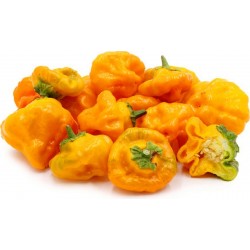
Semi di Peperoncino...
Prezzo
2,05 €
(SKU: C 35)
Seeds Gallery EU,
5/
5
<div>
<h2><span style="text-decoration:underline;"><span style="color:#808080;"><strong><em><strong>Semi di Peperoncino 'Jamaican Yellow'</strong></em></strong></span></span></h2>
<h3><span><strong><span style="color:#ff0000;">Confezione di 10 semi.</span><br /></strong></span></h3>
<div>Specie capsicum chinense, originari della Jamaica dotati di piccantezza elevata, molto similare allo "Scotch Bonnet" varietà dal sapore fruttato, la pianta è robusta, di alta produttività, cresce benissimo anche in vaso, i loro frutti presentano la forma a lanternina</div>
</div>
<div><strong>see also our video:</strong>
<div><span><strong><a href="http://www.youtube.com/watch/?v=HxtWF_w9UDo&feature=plcp" target="_blank" rel="noreferrer noopener"><span>http://www.youtube.com/watch?v=HxtWF_w9UDo&feature=plcp</span></a></strong></span></div>
<div> </div>
<div><strong>Video 2:</strong></div>
<div><span><strong><a href="http://www.youtube.com/watch/?v=viwzADvNyzQ&feature=plcp" target="_blank" rel="noreferrer noopener"><span>http://www.youtube.com/watch?v=viwzADvNyzQ&feature=plcp</span></a></strong></span></div>
</div>
C 35


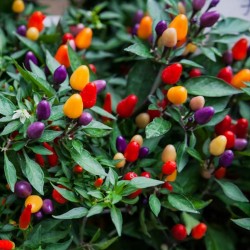
Semi di Peperoncino 'Aurora'
Prezzo
1,45 €
(SKU: C 33)
Seeds Gallery EU,
5/
5
<!DOCTYPE html>
<html>
<head>
<meta http-equiv="Content-Type" content="text/html; charset=UTF-8" />
</head>
<body>
<h2><span style="text-decoration: underline;"><em><strong>Semi di Peperoncino 'Aurora'</strong></em></span></h2>
<h3><span style="color: #ff0000;"><strong>Confezione di 5 semi.<br /></strong></span></h3>
<div>Peperoncino coloratissimo e ornamentale, lungo circa 3 cm. Si coltiva facilmente in vaso e raggiunge i 33 cm di altezza.</div>
<div>
<table cellspacing="0" cellpadding="4"><colgroup><col width="295" /><col width="216" /></colgroup>
<tbody>
<tr valign="top">
<td width="295">
<p><span>Giorni necessari alla germinazione:</span></p>
</td>
<td width="216">
<p><span>Da 10 a 21 giorni</span></p>
</td>
</tr>
<tr valign="top">
<td width="295">
<p><span>Temperatura ottimale per la germinazione:</span></p>
</td>
<td width="216">
<p><span>Sopra i 21 °C</span></p>
</td>
</tr>
<tr valign="top">
<td width="295">
<p><span>Giorni necessari al primo raccolto:</span></p>
</td>
<td width="216">
<p><span>90 / 100 gg</span></p>
</td>
</tr>
<tr valign="top">
<td width="295">
<p><span>Profondità per la semina:</span></p>
</td>
<td width="216">
<p><span>5 mm</span></p>
</td>
</tr>
<tr valign="top">
<td width="295">
<p><span>Spaziatura piante</span></p>
</td>
<td width="216">
<p><span>50 cm</span></p>
<div><span> </span></div>
</td>
</tr>
</tbody>
</table>
</div>
</body>
</html>
C 33

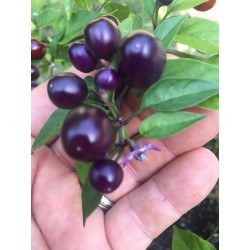
Semi Di Peperoncino...
Prezzo
8,50 €
(SKU: C 32)
Seeds Gallery EU,
5/
5
<h2><span style="text-decoration:underline;"><em><strong>Semi Di Peperoncino Piccante Filius Blue</strong></em></span></h2>
<h3><span style="color:#ff0000;"><strong>Confezione da 10 o 50 semi.<br /></strong></span></h3>
<div>Appartenente alla specie Capsicum Annuum bellissima pianta ornamentale e commestibile, produce un insolito fogliame porpora e frutti di piccole dimensioni crescono in posizione eretta di color violaceo di alta piccantezza e mantengono molto il loro colore per molto tempo prima di maturare al rosso, passando per il giallo e l'arancione, la piccantezza diventa più mite a maturazione finale.</div>
C 32

- Solo online

Pianta resistente al freddo e al gelo

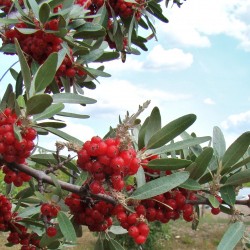
Semi di Shepherdia canadensis
Prezzo
1,95 €
(SKU: V 64)
Seeds Gallery EU,
5/
5
<h2><strong>Semi Russet Buffaloberry - Shepherdia canadensis</strong></h2>
<h2><span style="color: #ff0000;"><strong>Prezzo per Confezione da 5 semi.</strong></span></h2>
<div>
<div>I frutti di Shepherdia canadensis sono preziose fonti di antiossidanti</div>
<div>Il suo nome comune, buffaloberry, potrebbe dire ben poco alla maggior parte delle persone. Eppure il frutto della Shepherdia canadensis nasconde grandi quantità di composti antiossidanti preziosi per la salute. A svelarlo è uno studio pubblicato dai ricercatori dell'Institue of Food Technologists di Chicago sul Journal of Food Science, secondo cui all'interno di questo frutto di bosco, tipico dei territori nord-occidentali del continente americano, sono presenti dosi elevate di licopene e di un composto ad esso correlato, il metil-licopenoato, dalle proprietà antiossidanti e nutrienti.</div>
<div> </div>
<div>“Queste specie sono adattate ai suoli aridi e possono tollerare i climi più aridi – spiegano i ricercatori – Il buffaloberry prospera nelle riserve delle tribù degli Indiani d'America, dove produce quantità copiose di frutti benefici per la salute per il mercato dei prodotti freschi o dell'industria alimentare, fatto che lo rende una nuova potenziale coltivazione per i territori di confine”. Già diversi produttori del settore vinicolo hanno manifestato interesse nei confronti di questa nuova bacca, che entra di diritto fra le specie amiche della salute insieme a molti altri frutti di bosco dalle già comprovate proprietà benefiche per la salute.</div>
</div>
<div>
<table cellspacing="0" cellpadding="0" border="1">
<tbody>
<tr>
<td colspan="2" width="100%" valign="top">
<p><span><strong>Sowing Instructions</strong></span></p>
</td>
</tr>
<tr>
<td valign="top" nowrap="nowrap">
<p><span><strong>Propagation:</strong></span></p>
</td>
<td valign="top">
<p><span>Seeds</span></p>
</td>
</tr>
<tr>
<td valign="top" nowrap="nowrap">
<p><span><strong>Pretreat:</strong></span></p>
</td>
<td valign="top">
<p><span>Pour Hot water over seed. Soak in water for 24 hours</span></p>
</td>
</tr>
<tr>
<td valign="top" nowrap="nowrap">
<p><span><strong>Stratification:</strong></span></p>
</td>
<td valign="top">
<p><span>3 months in moist sowing mix at 2-5 ° C refrigerator</span></p>
</td>
</tr>
<tr>
<td valign="top" nowrap="nowrap">
<p><span><strong>Sowing Time:</strong></span></p>
</td>
<td valign="top">
<p><span>all year round</span></p>
</td>
</tr>
<tr>
<td valign="top" nowrap="nowrap">
<p><span><strong>Sowing Depth:</strong></span></p>
</td>
<td valign="top">
<p><span>1 cm</span></p>
</td>
</tr>
<tr>
<td valign="top" nowrap="nowrap">
<p><span><strong>Sowing Mix:</strong></span></p>
</td>
<td valign="top">
<p><span>Coir or sowing mix + sand or perlite</span></p>
</td>
</tr>
<tr>
<td valign="top" nowrap="nowrap">
<p><span><strong>Germination temperature:</strong></span></p>
</td>
<td valign="top">
<p><span>min. 20 ° C</span></p>
</td>
</tr>
<tr>
<td valign="top" nowrap="nowrap">
<p><span><strong>Location:</strong></span></p>
</td>
<td valign="top">
<p><span>bright + keep constantly moist not wet</span></p>
</td>
</tr>
<tr>
<td valign="top" nowrap="nowrap">
<p><span><strong>Germination Time:</strong></span></p>
</td>
<td valign="top">
<p><span>until it germinates </span></p>
</td>
</tr>
<tr>
<td valign="top" nowrap="nowrap">
<p><span><strong>Watering:</strong></span></p>
</td>
<td valign="top">
<p><span>Water regularly during the growing season</span></p>
</td>
</tr>
<tr>
<td valign="top" nowrap="nowrap">
<p><span><strong> </strong></span></p>
</td>
<td valign="top">
<p><br /><span><em>Copyright © 2012 Seeds Gallery - Saatgut Galerie - Galerija semena. </em><em>All Rights Reserved.</em></span></p>
</td>
</tr>
</tbody>
</table>
</div>
V 64 (5 S)

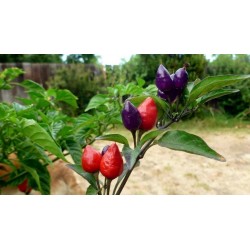
Semi di Peperoncino Numex...
Prezzo
1,50 €
(SKU: C 38)
Seeds Gallery EU,
5/
5
<h2><span style="text-decoration:underline;"><em><strong>Semi di Peperoncino Numex Centennial</strong></em></span></h2>
<h3><span><strong><span style="color:#ff0000;">Confezione di 5 semi.</span> </strong></span></h3>
<div>Questa è stata la prima varieta' ornamentale coltivata dalla New Mexico State University </div>
<div>destinata alla crescita in piccoli vasi. <span>È stata pubblicata nel 1988 per celebrare il centenario della loro istituzione. </span><span>'NuMex Centennial' ha fiori viola e fogliame porpora. </span><span>I frutti piccanti sono in posizione verticale,</span><span>sono di colore viola, poi maturano al giallo, arancione e infine rosso.</span></div>
<div>Molto simile nell'aspetto al Bolivian Rainbow.</div>
<div> </div>
C 38


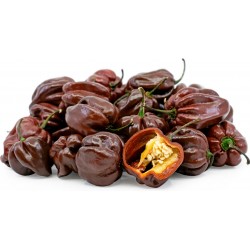
Semi di Peperoncini...
Prezzo
2,00 €
(SKU: C 19 C)
Seeds Gallery EU,
5/
5
<h2><strong>Semi di Peperoncini Habanero Chocolate</strong></h2>
<h2><span style="color:#ff0000;"><strong>Prezzo per confezione da 5 semi.<br /></strong></span></h2>
<div>Essendo una pianta perenne puo' essere tenuto all'interno per produrre il raccolto in anticipo il seguente anno. <span>L'Habanero Chocolate, conosciuto anche come Black Congo, è una cultivar di Habanero, (Capsicum chinense Jacquin) proveniente dalla Jamaica. È tra le specie più piccanti, e molti sostengono che sia più piccante del l'Habanero red Savina. </span><span>Ha un'altezza variabile tra i cm.60 e i 90. I frutti, pendenti, maturano passando dal verde al marrone e hanno un'altezza che varia tra i cm.4 e i 6 e una larghezza che varia tra i cm.2,5 e 5. La maturazione avviene in tarda stagione.</span></div>
<div>E' molto scuro tendente al marron-nero. </div>
<div>E' mediamente piccante quanto gli altri habanero</div>
<div>(500.000 SHU) </div>
<div>Il frutto è aromatico, poco meno degli Habanero rossi, è </div>
<div>perfetto se utilizzato nelle salse. </div>
C 19 C

- Solo online

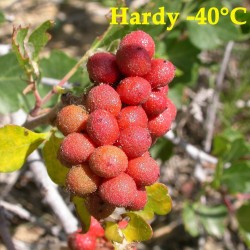
Semi di RHUS TRILOBATA...
Prezzo
2,90 €
(SKU: V 49)
Seeds Gallery EU,
5/
5
<h2><span style="color: #000000;"><strong>Semi Skunkbush Frutta Esotica Sumac</strong></span></h2>
<h2><span style="color: #ff0000;"><strong>Prezzo per Confezione da 5 semi.</strong></span></h2>
<p>Il sommacco, conosciuto anche col nome di sumac, è una spezia caratterizzata da buone proprietà antiossidanti. Si ricava dalla pianta del sommacco, nome scientifico Rhus coriaria, appartenente alla famiglia delle Anacardiaceae.</p>
<p>La pianta si presenta sotto forma di un arbusto che può raggiungere i 3 metri di altezza, le sue foglie sono seghettate e fiorisce in primavera ed in estate. Per la preparazione della spezia i frutti del sommacco vengono raccolti tra luglio e settembre quando non sono ancora giunti a maturazione e vengono poi fatti essiccare. Ad essiccazione avvenuta i frutti vengono tritati e si ottiene così la spezia chiamata sommacco o sumac.</p>
<div>
<div> </div>
<div>La pianta è abbastanza diffusa in Europa Meridionale ed in medio Oriente.</div>
<div> </div>
<div>Composizione Chimica</div>
<div>Il sommacco contiene acqua, proteine, fibre, carboidrati, ceneri, grassi ed olio essenziale in cui si trova la maggior parte delle sostanze con proprietà terapeutiche. È una buona fonte di minerali e precisamente contiene: fosforo, potassio, rame, ferro, zinco, magnesio, calcio, sodio.</div>
<div> </div>
<div>Contiene acido malico, acido oleico, acido linoleico e acido stearico; il sommacco contiene circa il 23 % di tannino che, insieme alle sostanze coloranti in esso contenute, viene principalmente utilizzato a livello industriale per la tintura dei tessuti in quanto a proprietà fissanti molto buone.</div>
<div> </div>
<div>In ultimo il sommacco contiene un’alta percentuale di sostanze antiossidanti che come sappiamo hanno una attività anti invecchiamento nei confronti delle cellule del nostro organismo nonché benefici effetti sulla nostra salute.</div>
<div> </div>
<div>Antibatterico: </div>
<div>grazie alle sostanze contenute nelle foglie, nei frutti e nell’olio essenziale da esso ricavato ha diverse virtù. Ha innanzitutto proprietà antibatteriche, antifungine, febbrifughe, diuretiche, ed antinfiammatorie.</div>
<div> </div>
<div>Sistema cardiovascolare: </div>
<div>l’estratto delle foglie ha dimostrato di avere effetti benefici sul sistema cardiovascolare. Le foglie contengono infatti gallotannini che hanno principalmente proprietà anti ischemiche.</div>
<div> </div>
<div>Abbassa la glicemia: </div>
<div>l’estratto di frutti di sommacco o sumac ha dimostrato invece di avere proprietà ipoglicemizzanti.</div>
<div> </div>
<div>Antiossidanti: </div>
<div>la proprietà più importante di questa spezia è senza dubbio quella antiossidante, il sommacco infatti è uno degli alimenti con il più alto potere antiossidante al mondo. Per farne comprendere bene il valore si è soliti paragonare il potere antiossidante del sumac o sommacco con quello della mela che è ritenuta un buon alimento con proprietà antiossidanti. Pensate che il sommacco, dal punto di vista delle proprietà antiossidanti, è ben 73 volte più potente della mela.</div>
<div> </div>
<div>Radicali liberi: </div>
<div>la grande abbondanza di antiossidanti contrasta gli effetti nocivi dei radicali liberi con benefici in termine di prevenzione nei confronti di diverse patologie, dai tumori alle malattie cardiovascolari.</div>
</div>
<div> </div>
<div>A low deciduous shrub that offers attractive flowers in spring and bright fruits and foliage in fall, skunkbush sumac is native to western North America. In mid-spring before the leaves emerge, conspicuous clusters of pale yellow flowers appear at the stem tips. Small berries follow, ripening red in late summer. Resembling poison ivy foliage, the downy three-lobed leaves are mildly glossy and medium to dark green. The leaflets have blunt-toothed edges. Bruised leaves release a malodorous scent. In autumn, the foliage turns fiery colors. </div>
<div>Skunkbush sumac does best in full sun and moderately moist soil, with the brightest autumn color produced under such conditions. In drier soil plants are smaller. Use this extremely hardy shrub as a loose low screen at the edge of a woodland or building, or to clothe a bank or other erosion-prone site. Plants may sucker and form a thicket in some conditions.</div>
<div>Genus: Rhus </div>
<div>Species: trilobata</div>
<div>Common Name: Skunkbush Sumac</div>
<div>Other Name: Schamltzia trilobata, Rhus Canadensis var. Trilobata, Quailbush</div>
<div>Pre-treatment: required</div>
<div>Zone Hardiness Cold: 4</div>
<div>Zone Hardiness warm: 7</div>
<div>Plant Type: Small Shrub</div>
<div>Height / Width: 1-2m/2-3m</div>
<div>Growth rate: medium</div>
<div>Vegetation type: decidious</div>
<div>Leaf /Flower color: green/yellow-green</div>
<div>Light</div>
<div>Conditions : Light Conditions </div>
<div>Unless a site is completely exposed, light conditions will change during the day and even during the year. The northern and eastern sides of a house receive the least amount of light, with the northern exsposure being the shadiest. The western and southern sides of a house receive the most light and are conidered the hottest exposures due to intense afternoon sun.</div>
<div>You will notice that sun and shade patterns change during the day. The western side of a house may even be shady due to shadows cast by large trees or a structure from an adjacent property. If you have just bought a new home or just beginning to garden in your older home, take time to map sun and shade throughout the day. You will get a more accurate feel for your site's true light conditions. </div>
<div>Conditions : Full to Partial Sun </div>
<div>Full sunlight is needed for many plants to assume their full potential. Many of these plants will do fine with a little less sunlight, although they may not flower as heavily or their foliage as vibrant. Areas on the southern and western sides of buildings usually are the sunniest. The only exception is when houses or buildings are so close together, shadows are cast from neighboring properties. Full sun usually means 6 or more hours of direct unobstructed sunlight on a sunny day. Partial sun receives less than 6 hours of sun, but more than 3 hours. Plants able to take full sun in some climates may only be able to tolerate part sun in other climates. Know the culture of the plant before you buy and plant it! </div>
<div>Watering</div>
<div>Conditions : Moist and Well Drained </div>
<div>Moist and well drained means exactly what it sounds like. Soil is moist without being soggy because the texture of the soil allows excess moisture to drain away. Most plants like about 1 inch of water per week. Amending your soil with compost will help improve texture and water holding or draining capacity. A 3 inch layer of mulch will help to maintain soil moisture and studies have shown that mulched plants grow faster than non-mulched plants. </div>
<div>Planting</div>
<div>How-tos : Planting Shrubs </div>
<div>Dig a hole twice the size of the root ball and deep enough to plant at the same level the shrub was in the container. If soil is poor, dig hole even wider and fill with a mixture half original soil and half compost or soil amendment.</div>
<div>Carefully remove shrub from container and gently separate roots. Position in center of hole, best side facing forward. Fill in with original soil or an amended mixture if needed as described above. For larger shrubs, build a water well. Finish by mulching and watering well.</div>
<div>If the plant is balled-and-burlapped, remove fasteners and fold back the top of natural burlap, tucking it down into hole, after you've positioned shrub. Make sure that all burlap is buried so that it won't wick water away from rootball during hot, dry periods. If synthetic burlap, remove if possible. If not possible, cut away or make slits to allow for roots to develop into the new soil. For larger shrubs, build a water well. Finish by mulching and watering well.</div>
<div>If shrub is bare-root, look for a discoloration somewhere near the base; this mark is likely where the soil line was. If soil is too sandy or too clayey, add organic matter. This will help with both drainage and water holding capacity. Fill soil, firming just enough to support shrub. Finish by mulching and watering well. </div>
<div>Problems</div>
<div>Diseases : Verticillium or Fusarium Wilt </div>
<div>Wilts may be contracted through infected seed, plant debris, or soil. This fungus begins and multiplies during the cool, moist season, becoming obvious when weather turns warm and dry. Plants wilt because the fungus damages their water conducting mechanisms. Overfertilization can worsen this problem. Able to overwinter in soil for many years, it is also carried and harbored in common weeds.</div>
<div>Prevention and Control: If possible, select resistant varieties. Keep nitrogen-heavy fertilizers to a minimum as well as over-irrigating as they encourage lush growth. Practice crop rotation and prune out or better yet remove infected plants. </div>
<div>Fungi : Powdery Mildew </div>
<div>Powdery Mildew is usually found on plants that do not have enough air circulation or adequate light. Problems are worse where nights are cool and days are warm and humid. The powdery white or gray fungus is usually found on the upper surface of leaves or fruit. Leaves will often turn yellow or brown, curl up, and drop off. New foliage emerges crinkled and distorted. Fruit will be dwarfed and often drops early.</div>
<div>Prevention and Control: Plant resistant varieties and space plants properly so they receive adequate light and air circulation. Always water from below, keeping water off the foliage. This is paramount for roses. Go easy on the nitrogen fertilizer. Apply fungicides according to label directions before problem becomes severe and follow directions exactly, not missing any required treatments. Sanitation is a must - clean up and remove all leaves, flowers, or debris in the fall and destroy. </div>
<div>Pest : Caterpillars </div>
<div>Caterpillars are the immature form of moths and butterflies. They are voracious feeders attacking a wide variety of plants. They can be highly destructive and are characterized as leaf feeders, stem borers, leaf rollers, cutworms and tent-formers.</div>
<div>Prevention and Control: keep weeds down, scout individual plants and remove caterpillars, apply labeled insecticides such as soaps and oils, take advantage of natural enemies such as parasitic wasps in the garden and use Bacillus thuringiensis (biological warfare) for some caterpillar species. </div>
<div>Fungi : Leaf Spots </div>
<div>Leaf spots are caused by fungi or bacteria. Brown or black spots and patches may be either ragged or circular, with a water soaked or yellow-edged appearance. Insects, rain, dirty garden tools, or even people can help its spread.</div>
<div>Prevention and Control: Remove infected leaves when the plant is dry. Leaves that collect around the base of the plant should be raked up and disposed of. Avoid overhead irrigation if possible; water should be directed at soil level. For fungal leaf spots, use a recommended fungicide according to label directions.</div>
<div>Pest : Scale Insects </div>
<div>Scales are insects, related to mealybugs, that can be a problem on a wide variety of plants - indoor and outdoor. Young scales crawl until they find a good feeding site. The adult females then lose their legs and remain on a spot protected by its hard shell layer. They appear as bumps, often on the lower sides of leaves. They have piercing mouth parts that suck the sap out of plant tissue. Scales can weaken a plant leading to yellow foliage and leaf drop. They also produce a sweet substance called honeydew (coveted by ants) which can lead to an unattractive black surface fungal growth called sooty mold.</div>
<div>Prevention and Control: Once established they are hard to control. Isolate infested plants away from those that are not infested. Cosnult your local garden center professional or Cooperative Extension office in your county for a legal recommendation regarding their control. Encourage natural enemies such as parasitic wasps in the garden. <span> </span></div>
<div>Miscellaneous</div>
<div>Conditions : Deer Tolerant </div>
<div>There are no plants that are 100% deer resistant, but many that are deer tolerant. There are plants that deer prefer over others. You will find that what deer will or will not eat varies in different parts of the country. A lot of it has to do with how hungry they are. Most deer will sample everything at least once, decide if they like it or not and return if favorable. A fence is the good deer barrier. You may go for a really tall one (7 to 8 feet), or try 2 parallel fences, (4 to 5 feet apart). Use a wire mesh fence rather than board, since deer are capable of wiggling through a 12 inch space. </div>
<div>Conditions : Pollution Tolerant </div>
<div>Air pollution is becoming a bigger problem each day. Pollutants in our air damage plants. The plants are damaged by absorbing sulfur dioxide, ozone, peroxyacetyl nitrate, ethylene, and nitrogen dioxide through their pores. Cell membrane damage may result in leaf drop, blotched or burnt looking leaves, or off-colored tissue between veins. Vehicles and industrial processes are the key culprits and conditions worsen on hot summer days. Though planting only pollution tolerant plants is not the solution to this problem, it is a visual bandaid. Your Cooperative Extension Service may have a list of plants that are more pollution tolerant in your area. </div>
<div>Conditions : Rabbit Tolerant </div>
<div>As cute as they are, rabbits can really damage a vegetable garden. Young, tender lettuce plants seem to be their favorite. If a free-roaming dog is not a possiblility for you, consider installing raised vegetable beds and covering tender shoots with netting. If you have ample room, you can opt to plant enough for you and the bunnies. Scents don't always repel animals, as they get used to them and are often washed off in the rain. </div>
<div>Conditions : Slope Tolerant </div>
<div>Slope tolerant plants are those that have a fibrous root system and are often plants that prefer good soil drainage. These plants assist in erosion control by stabilizing/holding the soil on slopes intact. </div>
<div>Conditions : Wind Tolerant </div>
<div>Plants that are wind tolerant usually have flexible, strong branches that are not brittle. Wind tolerant plants often have thick or waxy leaves that control moisture loss from whipping winds. Native plants are often the best adapted to not only wind, but also soil and other climatic conditions. </div>
<div>Conditions : Fall Color </div>
<div> </div>
<div>Fall color is the result of trees or shrubs changing colors according to complex chemical formulas present in their leaves. Depending on how much iron, magnesium, phosphorus, or sodium is in the plant, and the acidity of the chemicals in the leaves, leaves might turn amber, gold, red, orange or just fade from green to brown. Scarlet oaks, red maples and sumacs, for instance, have a slightly acidic sap, which causes the leaves to turn bright red. The leaves of some varieties of ash, growing in areas where limestone is present, will turn a regal purplish-blue.</div>
<div>Although many people believe that cooler temperatures are responsible for the color change, the weather has nothing to do with it at all. As the days grow shorter and the nights longer, a chemical clock inside the trees starts up, releasing a hormone which restricts the flow of sap to each leaf. As fall progresses, the sap flow slows and chlorophyll, the chemical that gives the leaves their green color in the spring and summer, disappears. The residual sap becomes more concentrated as it dries, creating the colors of fall. </div>
<div>Glossary : Deciduous </div>
<div>Deciduous refers to those plants that lose their leaves or needles at the end of the growing season. </div>
<div>Glossary : Shrub </div>
<div>Shrub: is a deciduous or evergreen woody perennial that has multiple branches that form near its base. </div>
<div>Glossary : Heat Zone </div>
<div>The 12 zones of the AHS Heat Zone map indicate the average number of days each year that a given region experiences ""heat days"" or temperatures over 86 degrees F(30 degrees Celsius). That is the point at which plants begin suffering physiological damage from heat. The zones range from Zone 1 (less than one heat day) to Zone 12 (more than 210 heat days). The AHS Heat Zone, which deals with heat tolerance, should not be confused with the USDA Hardiness Zone system which deals with cold tolerance. For example: Seattle, Washington has a USDA Hardiness Zone of 8, the same as Charleston, South Carolina; however Seattle's Heat Zone is 2 where Charleston's Heat Zone is 11. What this says is that winter temperature in the two cities may be similar, but because Charleston has significantly warmer weather for a longer period of time, plant selection based on heat tolerance is a factor to consider. </div>
<div>Glossary : Plant Characteristics </div>
<div>Plant characteristics define the plant, enabling a search that finds specific types of plants such as bulbs, trees, shrubs, grass, perennials, etc. </div>
<div>Glossary : Medium Shrub </div>
<div>A medium shrub is generally between 3 and 6 feet tall. </div>
<div>Glossary : Flower Characteristics </div>
<div>Flower characteristics can vary greatly and may help you decide on a ""look or feel"" for your garden. If you're looking for fragrance or large, showy flowers, click these boxes and possibilities that fit your cultural conditions will be shown. If you have no preference, leave boxes unchecked to return a greater number of possibilities. </div>
<div>Glossary : Foliage Characteristics </div>
<div>By searching foliage characteristics, you will have the opportunity to look for foliage with distinguishable features such as variegated leaves, aromatic foliage, or unusual texture, color or shape. This field will be most helpful to you if you are looking for accent plants. If you have no preference, leave this field blank to return a larger selection of plants.</div>
<div> </div>
<div>
<div>Sommacco è associato solitamente con piante che causano eruzioni cutanee come edera velenosa, quercia di veleno e sommacco. Tuttavia, esistono varietà commestibili sommacco. Queste varietà, come Rhus trilobata, comunemente chiamato sommacco di corno di cervo e Rhus aromatica o limone sommacco, producono bacche rosse. Sapori di sommacco commestibile estate bevande e tè e aggiunge colore e sapore ai pasti. Nel paesaggio, è necessario utilizzare commestibile sommacco in una zona selvaggia e controllo erosione su un terreno digradante, disturbato. Propagare sommacco dal seme nel tardo autunno o metà inverno.</div>
<div>Istruzioni</div>
<div>Apportano una pentola di acqua fino a 195 gradi F. versare l'acqua in una ciotola. Mettere i semi di sommacco nella ciotola di acqua e lasciarli in ammollo per 24 ore. Lasciare che l'acqua si raffreddi naturalmente come ammollo i semi.</div>
<div>• Montare iniziare del seme mescolare in un secchio e aggiungere lentamente l'acqua fino a quando è umido, ma non fangosi o saturo. Mettere la miscela di suolo umido in un seme piatto o in singoli vasi di 2 pollici. Livello alto col palmo della mano senza la compattazione del terreno.</div>
<div>• Assicuratevi un foro al centro di ogni piatto o 2 pollici a parte nel vassoio del seme con il dito indice o una matita. Praticare i fori 1/2 pollice profondo.</div>
<div>Seme uno sommacco bagnarsi in ogni buco e coprire con 1/2 pollice di terreno umido. Mettete i semi di sommacco in un'area che viene filtrata luce. Tenere semi di sommacco a 86 gradi F durante il giorno e a 68 gradi F durante la notte. Semi germinano in 10-20 giorni.</div>
<div>Piantine di sommacco •transplant in singoli vasi di 4 pollici quando si sviluppa la seconda serie di "foglie vere." Questi emergono dal seme dopo la prima serie di foglie, chiamato "fogli del seme". Riempire i vasi con terriccio e piantare i semenzali così l'altezza della base del gambo è lo stesso nel nuovo contenitore come era nella pentola iniziare del seme.</div>
<div>•Transplant sumac fuori a metà a fine estate, o tenere i giovani semenzali in contenitori in una serra attraverso il primo inverno e trapiantarli fuori nella primavera successiva.</div>
</div>
<div>
<table border="1" cellspacing="0" cellpadding="0">
<tbody>
<tr>
<td colspan="2" valign="top" width="100%">
<p><span><strong>Sowing Instructions</strong></span></p>
</td>
</tr>
<tr>
<td valign="top" nowrap="nowrap">
<p><span><strong>Propagation:</strong></span></p>
</td>
<td valign="top">
<p><span>Seeds</span></p>
</td>
</tr>
<tr>
<td valign="top" nowrap="nowrap">
<p><span><strong>Pretreat:</strong></span></p>
</td>
<td valign="top">
<p><span>pour over with hot water + Soak about 24 hrs</span></p>
</td>
</tr>
<tr>
<td valign="top" nowrap="nowrap">
<p><span><strong>Stratification:</strong></span></p>
</td>
<td valign="top">
<p><span>0</span></p>
</td>
</tr>
<tr>
<td valign="top" nowrap="nowrap">
<p><span><strong>Sowing Time:</strong></span></p>
</td>
<td valign="top">
<p><span>all year round</span></p>
</td>
</tr>
<tr>
<td valign="top" nowrap="nowrap">
<p><span><strong>Sowing Depth:</strong></span></p>
</td>
<td valign="top">
<p><span>Just lightly cover with substrate</span></p>
</td>
</tr>
<tr>
<td valign="top" nowrap="nowrap">
<p><span><strong>Sowing Mix:</strong></span></p>
</td>
<td valign="top">
<p><span>Coir or sowing mix + sand or perlite</span></p>
</td>
</tr>
<tr>
<td valign="top" nowrap="nowrap">
<p><span><strong>Germination temperature:</strong></span></p>
</td>
<td valign="top">
<p><span>min. 20 ° C</span></p>
</td>
</tr>
<tr>
<td valign="top" nowrap="nowrap">
<p><span><strong>Location:</strong></span></p>
</td>
<td valign="top">
<p><span>bright + keep constantly moist not wet</span></p>
</td>
</tr>
<tr>
<td valign="top" nowrap="nowrap">
<p><span><strong>Germination Time:</strong></span></p>
</td>
<td valign="top">
<p><span>until it germinates </span></p>
</td>
</tr>
<tr>
<td valign="top" nowrap="nowrap">
<p><span><strong>Watering:</strong></span></p>
</td>
<td valign="top">
<p><span>Water regularly during the growing season</span></p>
</td>
</tr>
<tr>
<td valign="top" nowrap="nowrap">
<p><span><strong> </strong></span></p>
</td>
<td valign="top">
<p><br /><span><em>Copyright © 2012 Seeds Gallery - Saatgut Galerie - Galerija semena. </em><em>All Rights Reserved.</em><em></em></span></p>
<div><span><em> </em></span></div>
</td>
</tr>
</tbody>
</table>
</div>
V 49 (5 S)


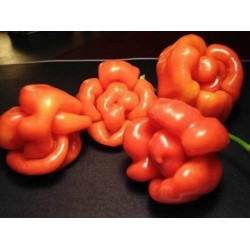
Semi di Peperoncino...
Prezzo
2,50 €
(SKU: C 6)
Seeds Gallery EU,
5/
5
<div><span style="text-decoration:underline;"><em><strong>Semi di Peperoncino Habanero Senegal</strong></em></span></div>
<div><span><strong><span style="color:#ff0000;">Prezzo per confezione da<strong> 5 </strong>semi.</span><br /></strong></span></div>
<div>Un bel habanero dal Senegal. Il sapore è dolce, vaniglia-dadi, ma il caldo è in alto per i habanero.</div>
C 6

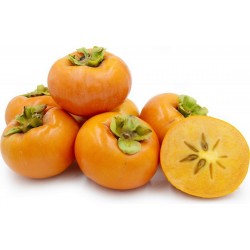
Semi di Americana Cachi...
Prezzo
3,50 €
(SKU: V 25 A)
Seeds Gallery EU,
5/
5
<h2 class=""><strong>Semi di Americana Cachi (Diospyros virginiana)</strong></h2>
<h2><span style="color: #ff0000;"><strong>Prezzo per Pacchetto di 2 semi.</strong></span></h2>
<div>
<div>Questa pianta di origine americana è stata introdotta in Italia come portainnesto del caco (Diospyros Kaki) in alternativa al Diospyros lotus. Nel tempo si sono apprezzate anche le qualità estetiche e qualche esemplare si è guadagnato uno spazio in giardino. Il Diospyros virginiana è una pianta frugale, slanciata, raggiunge i 15-18 metri a maturità: nel nostro clima si sviluppa bene, anche in terreni calcarei e asciutti (in collina può essere un’ottima ed originale scelta, una possibile alternativa di colore).</div>
<div>I diospiri in generale sono piante che i giardinieri amano e odiano allo stesso tempo, sono i frutti il problema: belli e buoni ma guai a non raccoglierli… II virginiana è pianta dioica, quindi se si è terrorizzati dallo “scompiglio” che causa l’abbondante fruttificazione si dovrebbero privilegiare esemplari maschi. Ho usato il condizionale perchè purtroppo questa pianta, che io sappia, non è lavorata dai nostri vivaisti e quindi non abbiamo scelta. Per crescere un virginiana l’unica è partire da seme e avere tanta pazienza e fortuna per il sesso desiderato.</div>
<div class="">Come per i cachi anche il Diospyros virginiana porta bacche che prima della maturazione non sono commestibili. Generalmente l’ok al palato lo abbiamo quando vediamo i primi corrugamenti della buccia esterna. Non scordiamoci che queste piante hanno frutta in maturazione autunno invernale e quindi possono essere un alimento importante per la fauna selvatica. </div>
</div>
V 25 A (2 S)


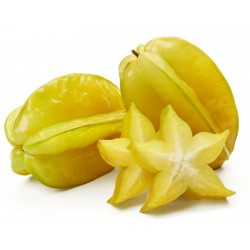
Semi di Carambola -...
Prezzo
4,00 €
(SKU: V 9 AC)
Seeds Gallery EU,
5/
5
<h2><strong>SEMI DI CARAMBOLA - AVERRHOA CARAMBOLA L.</strong></h2>
<h2><strong><span style="color: #ff0000;">Prezzo per confezione da 2 semi.</span></strong></h2>
<div>L'Averrhoa carambola, appartenente alla Famiglia delle Oxalidaceae, è un albero originario dello Sri Lanka, dell'India e delle Isole Molucche; diffuso in tutto il Sud-est asiatico, viene coltivato anche in Brasile, Ghana, Guyana e nella Polinesia francese. Il frutto (carambola) ha un bel colore di colore giallo-arancio, e si riconosce facilmente per la sezione a stella a cinque punte.</div>
<div>Tecnica colturale</div>
<div>E una pianta molto delicata, tipica dei climi tropicali, ma in Sicilia riesce a produrre anche in pieno campo se riparata bene.</div>
<div>Produzioni</div>
<div>Il frutto (Carambola o Star-fruit), a maturazione ottimale, ha un bel color giallo-arancio. Nei luoghi di origine viene consumato anche verde, spremuto nelle pietanze come un limone o a fette nelle insalate. Il gusto della carambola è un misto di diversi frutti, come limone, ananas, prugna. </div>
<div>Esistono due varietà di carambola: a frutto acido e dolce; quest’ultimo è esportato in Italia, specie nel periodo natalizio. Grazie alla sua forma originale, viene impiegato come guarnimento in pasticceria e nelle preparazione di bevande dal gusto esotico. Prelibati sono i liquori che si distillano dal succo di carambola, mentre la polpa può anche essere trasformata in canditi. </div>
<div>Contiene fenoli e flavonoidi quali acido gallico, catechina, epicatechina e proantociandine e ha trovato impiego nella medicina tradizionale per il trattamento di alcuni stati patologici, come cefalea, nausea, tosse, insonnia, ipertensione e diabete.</div>
<div>
<table border="1" cellspacing="0" cellpadding="0">
<tbody>
<tr>
<td colspan="2" valign="top" width="100%">
<p><span><strong>Sowing Instructions</strong></span></p>
</td>
</tr>
<tr>
<td valign="top" nowrap="nowrap">
<p><span><strong>Propagation:</strong></span></p>
</td>
<td valign="top">
<p><span>Seeds </span></p>
</td>
</tr>
<tr>
<td valign="top" nowrap="nowrap">
<p><span><strong>Pretreat:</strong></span></p>
</td>
<td valign="top">
<p><span>0</span></p>
</td>
</tr>
<tr>
<td valign="top" nowrap="nowrap">
<p><span><strong>Stratification:</strong></span></p>
</td>
<td valign="top">
<p><span>0</span></p>
</td>
</tr>
<tr>
<td valign="top" nowrap="nowrap">
<p><span><strong>Sowing Time:</strong></span></p>
</td>
<td valign="top">
<p><span>all year round</span></p>
</td>
</tr>
<tr>
<td valign="top" nowrap="nowrap">
<p><span><strong>Sowing Depth:</strong></span></p>
</td>
<td valign="top">
<p><span>0.5 - 1 cm</span></p>
</td>
</tr>
<tr>
<td valign="top" nowrap="nowrap">
<p><span><strong>Sowing Mix:</strong></span></p>
</td>
<td valign="top">
<p><span>Coir or sowing mix + sand or perlite</span></p>
</td>
</tr>
<tr>
<td valign="top" nowrap="nowrap">
<p><span><strong>Germination temperature:</strong></span></p>
</td>
<td valign="top">
<p><span>about 22-25 ° C.</span></p>
</td>
</tr>
<tr>
<td valign="top" nowrap="nowrap">
<p><span><strong>Location:</strong></span></p>
</td>
<td valign="top">
<p><span>bright + keep constantly moist not wet</span></p>
</td>
</tr>
<tr>
<td valign="top" nowrap="nowrap">
<p><span><strong>Germination Time:</strong></span></p>
</td>
<td valign="top">
<p><span>3-6 weeks</span></p>
</td>
</tr>
<tr>
<td valign="top" nowrap="nowrap">
<p><span><strong>Watering:</strong></span></p>
</td>
<td valign="top">
<p><span>Water regularly during the growing season</span></p>
</td>
</tr>
<tr>
<td valign="top" nowrap="nowrap">
<p><span><strong> </strong></span></p>
</td>
<td valign="top">
<p><br><span>Copyright © 2012 Seeds Gallery - Saatgut Galerie - Galerija semena. All Rights Reserved.</span></p>
</td>
</tr>
</tbody>
</table>
</div><script src="//cdn.public.n1ed.com/G3OMDFLT/widgets.js"></script>
V 9 AC (2 S)

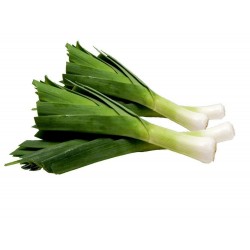
Semi di Porro ''Kamus''
Prezzo
1,75 €
(SKU: MHS 148)
Seeds Gallery EU,
5/
5
<div class="">
<h2><strong>Semi di Porro (Allium ampeloprasum L.)</strong></h2>
<h2><span style="color: #ff0000;"><strong>Prezzo per Pacchetto di 320 (1g) semi.</strong></span></h2>
<div>Varietà con fogliame semi eretto, di colore verde scuro, mezzo lungo con buono sviluppo, lieve rigonfiamento al colletto. Molto rustico per raccolta autunno inverno.</div>
<div>Seminare in pieno campo mar-apr-mag-giu-lug</div>
<div>Seminare in semenzaio gen-feb</div>
<div>Trapianto mar-apr</div>
<div>Raccolto gen-set-ott-nov-dic</div>
<div>
<div>
<table cellspacing="0" cellpadding="0" border="1">
<tbody>
<tr>
<td colspan="2" width="100%" valign="top">
<p><span style="color: #008000;"><strong>Sowing Instructions</strong></span></p>
</td>
</tr>
<tr>
<td valign="top" nowrap="nowrap">
<p><span style="color: #008000;"><strong>Propagation:</strong></span></p>
</td>
<td valign="top">
<p><span style="color: #008000;">Seeds</span></p>
</td>
</tr>
<tr>
<td valign="top" nowrap="nowrap">
<p><span style="color: #008000;"><strong>Pretreat:</strong></span></p>
</td>
<td valign="top">
<p><span style="color: #008000;">0</span></p>
</td>
</tr>
<tr>
<td valign="top" nowrap="nowrap">
<p><span style="color: #008000;"><strong>Stratification:</strong></span></p>
</td>
<td valign="top">
<p><span style="color: #008000;">0</span></p>
</td>
</tr>
<tr>
<td valign="top" nowrap="nowrap">
<p><span style="color: #008000;"><strong>Sowing Time:</strong></span></p>
</td>
<td valign="top">
<p><span style="color: #008000;">all year round </span></p>
</td>
</tr>
<tr>
<td valign="top" nowrap="nowrap">
<p><span style="color: #008000;"><strong>Sowing Depth:</strong></span></p>
</td>
<td valign="top">
<p><span style="color: #008000;">1 cm</span></p>
</td>
</tr>
<tr>
<td valign="top" nowrap="nowrap">
<p><span style="color: #008000;"><strong>Sowing Mix:</strong></span></p>
</td>
<td valign="top">
<p><span style="color: #008000;">Coir or sowing mix + sand or perlite</span></p>
</td>
</tr>
<tr>
<td valign="top" nowrap="nowrap">
<p><span style="color: #008000;"><strong>Germination temperature:</strong></span></p>
</td>
<td valign="top">
<p><span style="color: #008000;">+16 / +25°C</span></p>
</td>
</tr>
<tr>
<td valign="top" nowrap="nowrap">
<p><span style="color: #008000;"><strong>Location:</strong></span></p>
</td>
<td valign="top">
<p><span style="color: #008000;">bright + keep constantly moist not wet</span></p>
</td>
</tr>
<tr>
<td valign="top" nowrap="nowrap">
<p><span style="color: #008000;"><strong>Germination Time:</strong></span></p>
</td>
<td valign="top">
<p><span style="color: #008000;">2-3 weeks</span></p>
</td>
</tr>
<tr>
<td valign="top" nowrap="nowrap">
<p><span style="color: #008000;"><strong>Watering:</strong></span></p>
</td>
<td valign="top">
<p><span style="color: #008000;">Water regularly during the growing season</span></p>
</td>
</tr>
<tr>
<td valign="top" nowrap="nowrap">
<p><span style="color: #008000;"><strong> </strong></span></p>
</td>
<td valign="top">
<p><br><span style="color: #008000;"><em>Copyright © 2012 Seeds Gallery - Saatgut Galerie - Galerija semena. </em><em>All Rights Reserved.</em><em></em></span></p>
</td>
</tr>
</tbody>
</table>
</div>
</div>
</div><script src="//cdn.public.n1ed.com/G3OMDFLT/widgets.js"></script>
MHS 148 (1g)

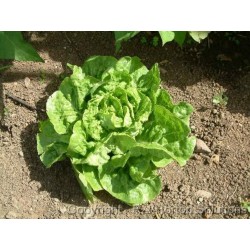
Semi di Lattuga Verde...
Prezzo
1,50 €
(SKU: PL 1)
Seeds Gallery EU,
5/
5
<div>
<h2><span style="font-size: 14pt;"><strong>Semi di Lattuga Verde Mignonette</strong></span></h2>
<h3><span style="color: #ff0000;"><strong><span style="font-size: 14pt;" class="">Prezzo per confezione da 100 (0,09g) semi.</span><br></strong></span></h3>
<div>Green Mignonette' is a butterhead lettuce type. It is an excellent home garden variety as it is easy to grow with exceptional eating qualities and is slow to bolt. It has soft, deep green, ruffled leaves, a loose heart and is very tender and sweet. It is suitable for planting for most of the year. Days to harvest: 25 days salad mix; 46 days full size.</div>
</div><script src="//cdn.public.n1ed.com/G3OMDFLT/widgets.js"></script>
PL 1 (100 S)





